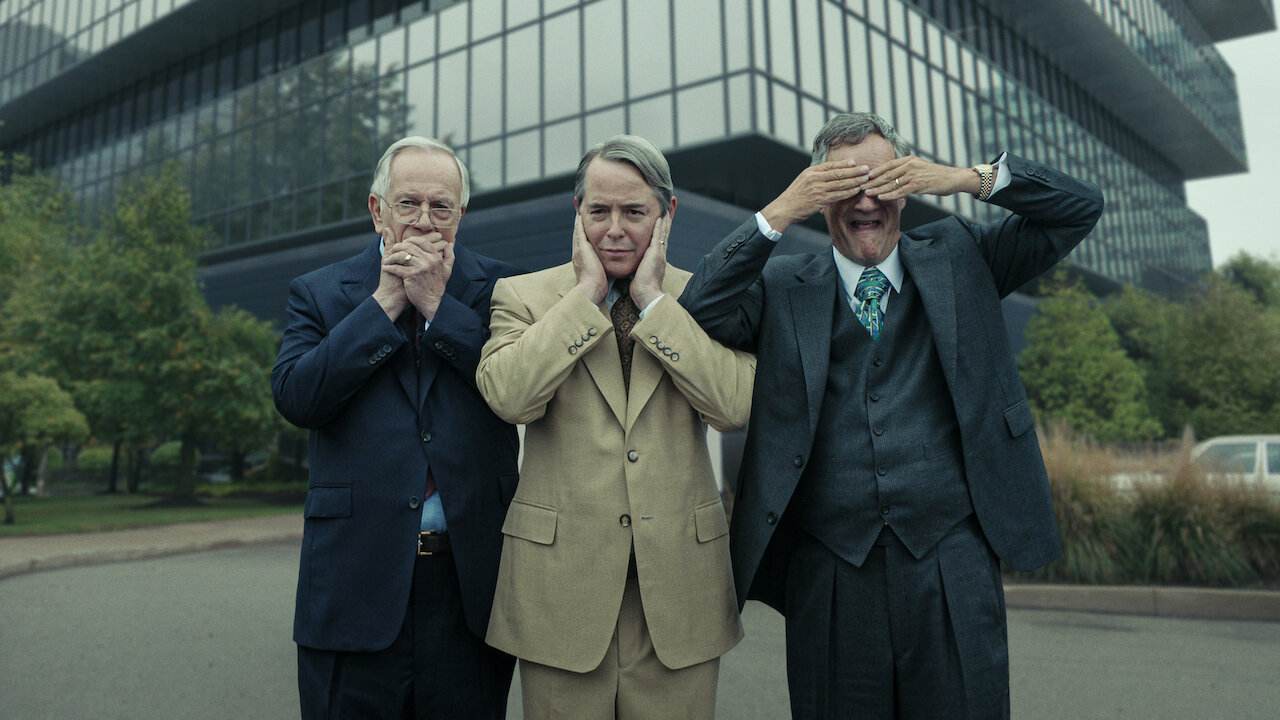After the success of "Dopesick" in 2021, Netflix has launched this year "Painkiller", a series that tells the story of the Sackler family, owners of Purdue Pharma, the company that developed OxyContin.
The two series offer a unique and powerful look at the devastating epidemic that has plagued America for decades, from the average addict caught in the web of Oxycontin to the unscrupulous tycoons behind Purdue Pharma.
In this article, we will compare both series based on their key factors: authenticity, tone, focus, character development, cast, and reviews.

Which series is better Painkiller or Dopesick?
Authenticity
Dopesick is based on Beth Macy's book "Dopesick: Dealers, Doctors and the Drug Company that Addicted America." Macy is an award-winning journalist who has investigated the opioid crisis for years. Her book is a detailed and exhaustive account of the crisis, including interviews with people across the spectrum, from those responsible for the crisis to the victims.
While Painkiller uses two main sources, first the New Yorker article titled "The Family That Built an Empire of Pain" and the 2003 book "Pain Killer: An Empire of Deceit and the Origin of America's Opioid Epidemic" by Barry Meier.
To ensure the accuracy of medical details, both series involved a team of medical and pharmaceutical consultants. These consultants reviewed the script and provided feedback to ensure that the medical information was correct.

In Dopesick, the plot dives into a foundation of solid fact, exploring the intertwined stories of real people through composite characters. Who could forget the deep and serious tone that sets this series as it navigates the devastating experiences of the inhabitants of Finch Creek, Virginia?
Meanwhile, Painkiller dares to take the stakes further. Although based on composite characters, this series takes a bold turn, fusing genres from thriller to anti-capitalist satire. The story delves into the dark corners of Purdue Pharma and its ruthless drive to popularize OxyContin. And the anecdotes about stuffed animals and cheerleaders? While Painkiller adds its own surreal twist to the narrative, there is no confirmed evidence that these events occurred in real life.
While Dopesick takes realism to its core, Painkiller plays with acting, leading Matthew Broderick to channel the most intense drama as Richard Sackler. On the other hand, Michael Stuhlbarg in Dopesick presents a more controlled version. And we can't overlook the touches of genius in Painkiller, with visions of Sackler interacting with his deceased uncle and mentor in hallucinatory moments.
Tone
Painkiller has a more sombre and pessimistic tone than Dopesick. This is because Painkiller focuses on the Sackler family, who are portrayed as a rich and powerful family that is willing to do anything to protect their interests. The Sacklers are portrayed as responsible for the opioid crisis, as they misled doctors and patients about the dangers of OxyContin.
Dopesick, on the other hand, presents a broader perspective on the opioid crisis. The series shows how the crisis was the result of a combination of factors, including the greed of the pharmaceutical industry, the corruption of regulators and the vulnerability of patients.

Dopesick's tone is more complex and nuanced than Painkiller's. The series is both informative and moving, showing us different aspects of the opioid crisis.
Dopesick's tone helps create a sense of hope. The series shows us that the opioid crisis is not inevitable, and that steps can be taken to address it.
Focus
Painkiller focuses more on the Sackler family. The series follows the story of Richard Sackler, the patriarch of the family, and its role in the development and commercialization of OxyContin. The series also explores the Sackler family's role in covering up the risks of OxyContin.
The Sackler family is portrayed as a rich and powerful family that is willing to do anything to protect their interests. The Sacklers are portrayed as responsible for the opioid crisis, as they misled doctors and patients about the dangers of OxyContin.

Dopesick also focuses on the Sackler family, but also explores other aspects of the opioid crisis. The series follows the story of a rural doctor who inappropriately prescribes OxyContin, as well as the story of a group of opioid patients struggling with his addiction.
Dopesick, on the other hand, presents a broader perspective on the opioid crisis. The series shows how the crisis was the result of a combination of factors, including the greed of the pharmaceutical industry, the corruption of regulators and the vulnerability of patients.
Character development
Dopesick's characters are more understanding and complex
The series Dopesick and Painkiller take different approaches to telling the story of the opioid crisis in the United States. Dopesick focuses on the true story of how Purdue Pharma developed OxyContin and aggressively promoted it, despite the risks of addiction. Painkiller, on the other hand, is a fictional story that focuses on the Sackler family, the owners of Purdue Pharma.

Dopesick explores the villains' motives
Dopesick does a good job of exploring the motives of the story's villains. Richard Sackler, the leader of Purdue Pharma, is portrayed as a complex man motivated by a combination of factors, including his ego, his desire for success, and his desire to protect his family.
Painkiller focuses on the greed of the Sacklers
Painkiller, on the other hand, focuses on the greed of the Sacklers. The series portrays the family as a faction of one-dimensional villains who are motivated solely by money.
Dopesick's characters are more realistic
Dopesick's characters are also more realistic than Painkiller's. Dopesick's characters are flawed and make mistakes, but they are also capable of redemption.
For example, Billy, a pharmaceutical representative who sells OxyContin, finally realizes the consequences of his work. He feels guilty for having contributed to the opioid crisis and decides to cooperate with investigators.
Shannon, another pharmaceutical representative, also has a crisis of conscience. After being sexually assaulted by a doctor, she realizes that Purdue Pharma is complicit in the opioid epidemic.
Painkiller's characters, on the other hand, are less realistic. Shannon, the protagonist of Painkiller, is a strong, independent woman who suddenly becomes a passive victim.
Cast
Both Painkiller and Dopesick feature a stellar cast. The series features well-known actors such as Michael Keaton, Michael Stuhlbarg, Peter Sarsgaard, Kaitlyn Dever, Rosario Dawson, Will Poulter, and John Hoogenakker.
In Painkiller, Michael Keaton plays Richard Sackler. Keaton is an Oscar-winning actor who is known for his complex and nuanced performances. Richard Sackler's portrayal of him is one of the best of his career.
In Dopesick, Michael Stuhlbarg plays Dr. Finnix. Stuhlbarg is an Emmy-winning actor who is known for his sensitive and emotional performances. His portrayal of Dr. Finnix is one of the most memorable in the series.

Reviews
Dopesick
- Overall, Dopesick reviews were very positive.
- Critics praised the series for its accuracy, drama and acting.
- Some critics felt the series was too long, but overall, they praised it for its commitment to truth.
Painkiller
- Reviews for Painkiller were more mixed.
- Some critics praised the series for its pacing and visual appeal.
- Other critics felt that the series was too simplistic and did not offer deep insight into the opioid crisis.
Dopesick and Painkiller are two very different series that approach the opioid crisis from different perspectives. Although preference for one series over the other is a matter of opinion, Dopesick is a more informative and nuanced series than Painkiller. What we must not forget is that both series are valuable in understanding the scope and complexity of the opioid crisis in the United States, but Dopesick offers a more complete and objective view.

Comentarios